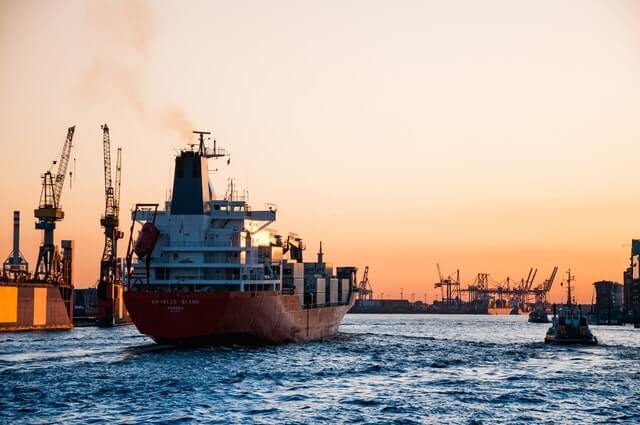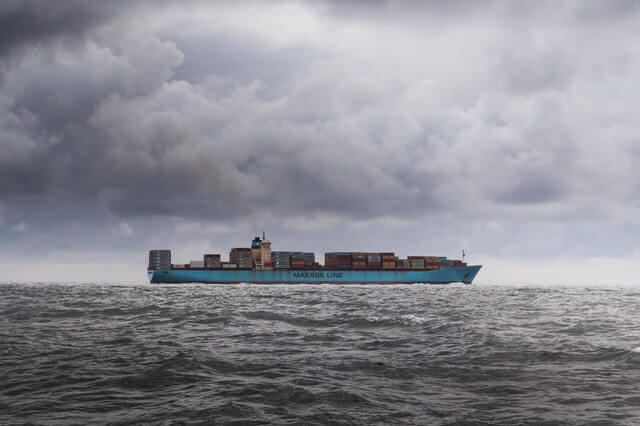At its core, slow steaming is when there is a deliberate reduction in the cruising speed of a sea vessel. This intentional slowing down of a vessel is primarily done to reduce fuel consumption and pollution from emissions.
When a ship is slow steaming, it reduces its travel speed down to somewhere between 12 and 19 knots. This can sometimes mean half the speed of the normal 20 to 24 knots. The reduction in speed brings with it a reduction in fuel costs. In a scenario where a container ship would normally use 200 tons of fuel over the course of a normal day at 24 knots, slow steaming at 21 knots a day would bring that fuel consumption down to around 125 tons for the day.
Benefits of Slow Steaming
As alluded to, there are primarily financial, environmental, and performance-related benefits. In order for shipping companies to stay afloat when fuel prices rise and when recessions occur, slow steaming becomes more of a necessity than an option. However, the decision for slow steaming is also made by companies to become environmentally responsible.
The environmental benefits are connected to the use of less fuel. For example, when a vessel reduces its speed by 10%, the engine power gets reduced be nearly 30%. Less power needed means less fuel is needed. When there is less fuel used, there are less emissions produced and released into the environment. The end result of this is less pollution and contribution to the global issue of climate change. With increasing pressure on all industries to reduce their carbon emissions, implementing the use of slow steaming is essentially becoming a requirement.
The financial benefits involve using less fuel. The cost of fuel is something that can be reduced when less fuel is needed. Thankfully, it provides an effective way for shipping companies to save more money, since they will be using less power. There are also performance benefits as a vessel will become more reliable and efficient when it regularly implements slow steaming.

Different Types of Slow Steaming
First, there is a method of slow steaming where a ship brings its speed down to a level that would not necessitate the ship’s owners to modify the engine in any way. This would essentially be the cut-out point for the auxiliary blowers of the engine.
The second type of slow steaming involves the ship owners and charterers agreeing that vessel is able to slow steam with a great reduction in speed (towards the lower limit of 12 knots). When this is agreed upon, there will be an extra, yet optional, provision that will handle the very slow steaming.
The first type is the most common way slow steaming is conducted. There are obvious reasons for this, such as the bypassing of a need for retrofitting of a ship’s engine. The second type of slow steaming is rarely applied and when it is, there are only a few cases where it becomes implemented.

Concerns and Challenges
While there are definitive benefits to slow steaming, there are also concerns and challenges with this strategy. There are additional routines and inspections which have to be performed, which are done to ensure minimal engine damage.
One issue is that slow steaming can foul up the turbochargers. This results in a reduction of the ship’s efficiency. Turbochargers that operate beyond the range they have been designed for will lead to less air flow. With this reduction comes the potential for more carbon deposits. The increase in these deposits on the fuel injectors can negatively affect the ship’s performance.
Another issue is the fouling of the exhaust gas economizer. The result of this is that there is less capacity and more danger of a hazardous soot fire breaking out.
A third issue possible with slow steaming is less scavenge air pressure. This is why scavenge inspections have to be a normal and frequent occurrence. If inspections are not regularly carried out, there is potential for improper combustion. Another scavenge issue that also poses a challenge is an elevated risk in scavenge fires. This threat necessitates additional scavenge draining, as well as the area under the pistons.

How will it impact Shippers and Carriers?
The impact of slow steaming on both shippers and carriers is essentially a mixed bag. While there are financial, environmental, and efficiency benefits that can be gleamed, there are also precautions that need to be taken so that damage is avoided.
Running a marine engine at low loads is not something that shipping vessels have been designed to do. When checks and inspections are conducted, there is far less potential for any damage to occur to a vessel. Nonetheless, these inspections must be frequent, consistent, and thorough. Certain precautions and routines must be conducted routinely and diligently when it is implemented.
There is also a time factor that is impacting shippers and carriers. The process of slow steaming increases the duration of transit time of a vessel. This impacts customers, who will see their goods become delayed and need to be educated.
There also needs to be specialized training of maritime engineers in regards to the new process. The more educated they become, the more comfortable they will be.
Financial pressures and environmental degradation have made slow steaming something all shippers and carriers have to get on board with. Overall, there have been few changes that vessels have needed to implement. With many companies seeing the intended results, there is no need to be apprehensive in implementing it.
When global maritime speeds get reduced by 10%, there will be carbon dioxide savings at nearly 20%. This holds true even after new ships are built and go into operation to pick up the slack for a reduction in capacity. With results like this, it makes complete sense for the shipping industry to implement slow steaming today.



